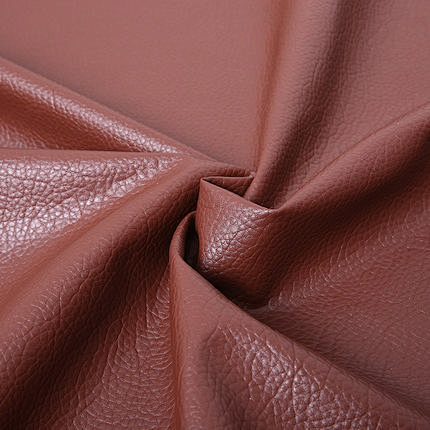Is synthetic leather of animal origin?

What Really Is Synthetic Leather?
Synthetic leather represents not only a modern alternative to traditional leather, but also a practical solution for those looking for ethical and sustainable options. With names like fake leather, faux leather, or PU leather, this material has become popular in several sectors, including fashion, upholstery, and automotive. Its composition and manufacturing methods clearly distinguish it from natural leather.
History and Evolution of Synthetic Leather
From Presstoff to Leatherette: A Journey in Time
The origin of synthetic leather dates back to the invention of the Presstoff in the 19th century in Germany. This material, created from paper pulp, was a solution during World War II when natural leather was scarce. Over time, technology has evolved, and materials such as leatherette have emerged, offering a more resistant and versatile alternative.
Modern Innovations: From DuPont to Piñatex
Companies like DuPont have been pioneers in the introduction of synthetic materials such as Corfam. On the other hand, Konrad Hornschuch AG marked a milestone with the launch of Skai, another type of synthetic leather. These developments have been crucial for the diversification of uses and improvement in the quality of synthetic leather.
Components and Manufacturing of Fake Leather
Base Materials: From PVC to Polyurethane
The main components of synthetic leather include PVC (polyvinyl chloride) and polyurethane. These are applied on a fabric base, which can be made of natural or synthetic fiber. This base provides the structure while the plastic coatings add durability and aesthetics.
Manufacturing Process: From the Base Fabric to the Final Texture
The manufacturing process is complex and varied. It begins with the selection of a suitable base fabric, followed by the application of polyurethane and color coats. The last step involves adding texture to mimic the appearance of natural leather.
Synthetic Leather vs. Natural Leather: A Comparison
Look and Feel: Similarities and Differences
Synthetic leather imitates the appearance of natural leather, but differs in characteristics such as porosity and texture. These differences are significant in applications such as clothing and shoes, where breathability is a key factor.
Advantages of Real Leather Versus Synthetic
While natural leather is known for its durability and ability to age gracefully, synthetic leather offers advantages in maintenance and resistance to fading. It is a popular choice in applications where uniformity and ease of care are essential.
Applications and Uses of Synthetic Leather
Fashion and Accessories: From Footwear to Clothing
Synthetic leather has become a material of choice in the fashion industry. Its flexibility and variety of styles make it ideal for a wide range of products, from footwear to clothing, offering an affordable and ethical alternative.
Automotive and Upholstery: Durability and Style
In the automotive industry, synthetic leather is prized for its durability and easy maintenance. These qualities make it ideal for upholstery and car seats, where a combination of style and functionality is sought.
Environmental Impact and Ethical Considerations
Synthetic Leather: A More Sustainable Option?
The environmental impact of synthetic leather is a topic of debate. Although it avoids the use of animal products, its production can involve intensive chemical processes and the use of plastics, raising concerns about its sustainability.
The Ethical Debate: Animals vs. Artificial Alternatives
The choice between synthetic and natural leather also entails ethical considerations related to animal welfare and environmental impact. Synthetic leather offers a cruelty-free alternative, but its ecological impact must be carefully considered.
Demystifying the Origin of Synthetic Leather
In conclusion, synthetic leather does not come from animal sources. It represents an ethical and practical alternative to traditional leather. With its wide range of applications and styles, it continues to evolve, offering options for environmentally conscious consumers and fashion enthusiasts.
However, it should be noted that not all types synthetic leather are the same. There are different ways to manufacture this material, and some may be more environmentally friendly than others. For example, some synthetic leathers are made from recycled or biodegradable fibers, while others use fibers derived from petroleum or genetically modified crops. In addition, some polymers may contain toxic substances or contaminants that can affect human health and the environment.
Therefore, it is important to be well informed about the origin and the composition of synthetic leather before purchasing or using it. This way we can choose the type of synthetic leather that best suits our preferences and values, and avoid contributing to animal suffering and environmental deterioration.

